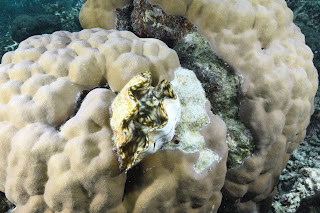That smooth curve
.jpg)
"Oh, it's beautiful!" I exclaimed, "look at that smooth curve!" Beside me, Kharis was just as excited - although not quite as vocal. I pointed at the screen with both hands. A smooth fluorescence curve on the graph indicated that our sample contained DNA. "That means it worked!" "No, yeah, I get it," Kharis nodded. "Cool." We were upstairs in a colleague's lab, using a fluorometer to measure the concentration and purity of DNA in some samples. Some of you might remember that I've struggled for a few years with methods for extracting DNA from larvae . The problem is that larvae are so small, a single individual doesn't have a lot of DNA. Any of the tried-and-true extraction methods I use for larger organisms don't really work well for larvae because they include wash steps. Of course, washing a sample is meant to carry away everything except the DNA, but a little bit inevitably gets lost with each step. When there



